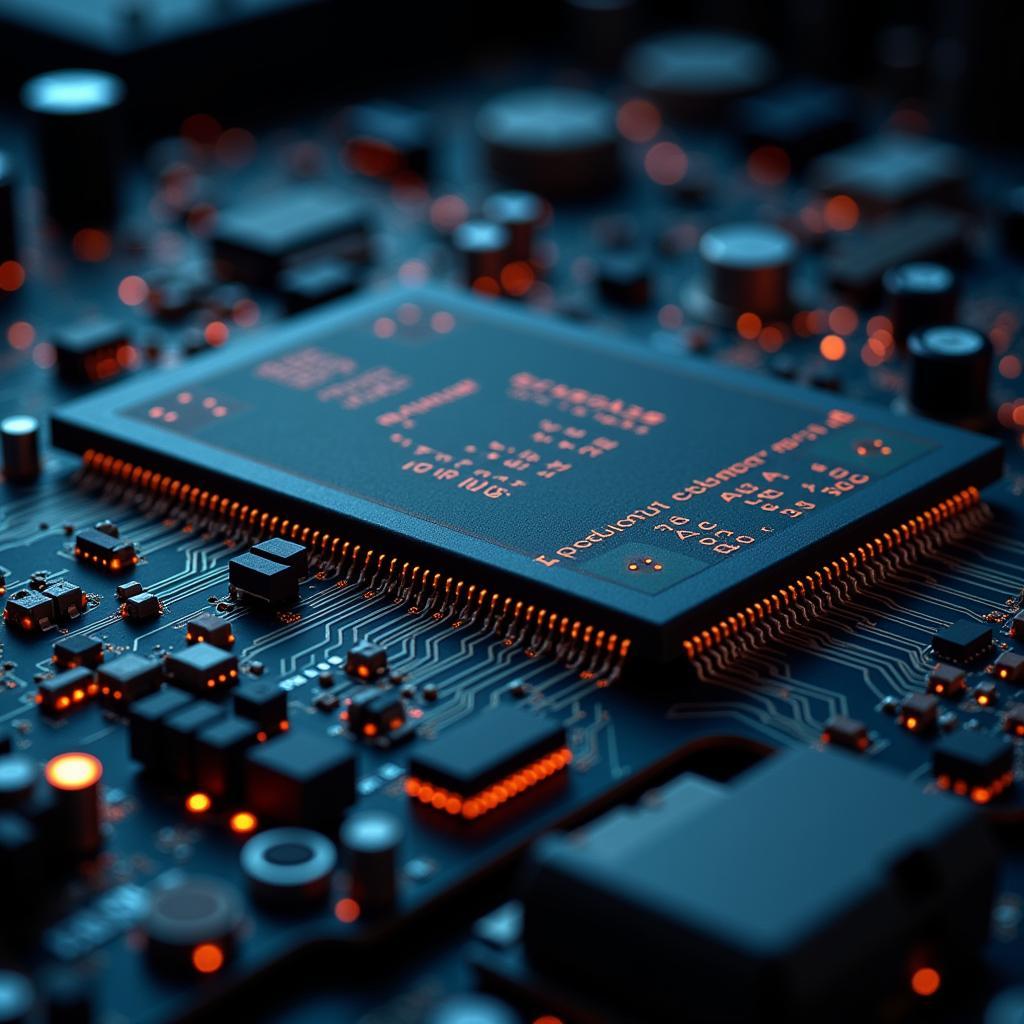The “problem checker chip,” more commonly known as the Engine Control Unit (ECU), is the brain of your car’s intricate electrical system. This powerful computer constantly monitors and controls various systems, ensuring optimal performance and fuel efficiency. When a problem arises, the ECU logs a Diagnostic Trouble Code (DTC), illuminating the dreaded “Check Engine” light on your dashboard. This can be anything from a loose gas cap to a more serious engine issue. Understanding how to interpret these codes can be incredibly valuable, empowering you to address issues promptly and potentially save on costly repairs.
Deciphering the Language of Your Car: Understanding DTCs
Diagnostic Trouble Codes might seem like cryptic messages, but they are essentially your car’s way of communicating with you. These codes, formatted as a combination of letters and numbers, correspond to specific areas and components within your vehicle’s system.
For example, a code starting with “P” usually indicates a powertrain-related issue, while a code starting with “B” often points to a problem with the body electronics. Each code is associated with a detailed description, pinpointing the source of the problem.
 Modern car ECU unit
Modern car ECU unit
How the Problem Checker Chip Assists in Diagnostics
The ECU plays a crucial role in diagnosing car problems. Imagine this: you’re driving down the road, and a sensor detects an unusual engine temperature reading. The ECU receives this information, compares it against pre-programmed parameters, and if the reading falls outside the acceptable range, it logs a DTC and triggers the “Check Engine” light. This prompt action allows you to address the issue before it escalates into a major problem.
Common Issues Detected by the Problem Checker Chip
Here are some of the most frequent issues the problem checker chip can identify:
- Oxygen Sensor Malfunction: A faulty oxygen sensor can disrupt the air-fuel mixture, impacting engine performance and fuel economy.
- Mass Airflow Sensor Issue: The mass airflow sensor measures the amount of air entering the engine. A malfunctioning sensor can lead to poor acceleration, rough idling, and increased emissions.
- Catalytic Converter Problems: The catalytic converter plays a critical role in reducing harmful emissions. A failing converter can cause a loss of power, poor acceleration, and a foul-smelling exhaust.
- Spark Plug or Ignition Coil Failure: Worn-out spark plugs or a faulty ignition coil can cause misfires, leading to reduced engine power, rough idling, and difficulty starting.
- EVAP System Leak: The EVAP system prevents fuel vapors from escaping into the atmosphere. A leak in this system can trigger the “Check Engine” light and may lead to a slight fuel odor.
What to Do When the “Check Engine” Light Turns On
It’s important to remember that the “Check Engine” light doesn’t always signal a catastrophic problem. However, ignoring it can lead to further damage and more expensive repairs down the line. Here’s what you should do:
- Don’t Panic: Take note of any unusual noises, smells, or performance issues.
- Check Your Gas Cap: A loose or missing gas cap is a surprisingly common cause for the “Check Engine” light. Make sure it’s securely fastened.
- Read the Codes: You can have the codes read for free at most auto parts stores or use an affordable OBD-II scanner yourself.
- Research the Codes: Once you have the codes, research their meaning online or consult a repair manual. This will give you a better understanding of the potential problem.
- Consult a Mechanic: If the issue seems complex or you’re unsure about tackling it yourself, consult a qualified mechanic.
The Importance of Regular Maintenance
Regular maintenance is key to preventing many of the issues that trigger the “Check Engine” light. Following your car manufacturer’s recommended maintenance schedule can significantly reduce the risk of unexpected breakdowns and costly repairs.
“Regularly servicing your vehicle is like investing in its longevity,” says automotive expert John Miller. “It’s a proactive approach that can save you time, money, and unnecessary headaches in the long run.”
Embracing Technology for Easier Diagnostics
Modern cars are equipped with increasingly sophisticated technology, and there are now numerous apps and devices that can connect to your car’s computer system, providing even more detailed diagnostic information. These tools can be incredibly useful for understanding your car’s health and identifying potential issues before they become major problems.
“The ability to monitor your car’s health in real-time is a game-changer,” adds Miller. “These technological advancements empower car owners to stay informed and take proactive measures to keep their vehicles running smoothly.”
Conclusion
The “problem checker chip” or ECU, is a vital component of your car’s system, acting as a vigilant guardian of its well-being. Understanding its role in diagnosing problems and taking appropriate action when the “Check Engine” light illuminates can save you time, money, and potential headaches on the road. Remember, a well-maintained car is a happy car!
Need expert advice on car maintenance or repairs? Contact AutoTipPro at +1 (641) 206-8880 or visit our office at 500 N St Mary’s St, San Antonio, TX 78205, United States. We’re here to keep you rolling!






Leave a Reply